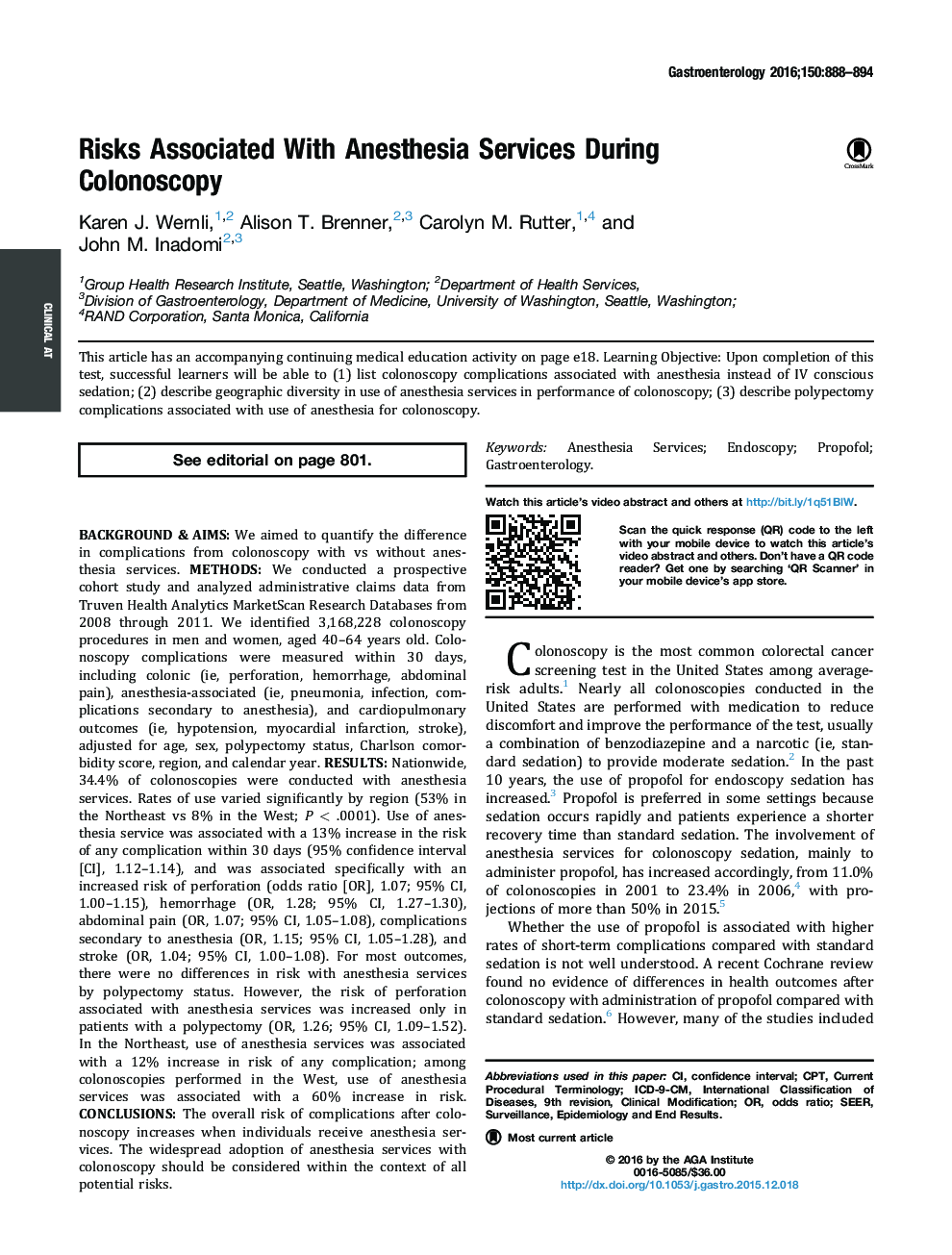| Article ID | Journal | Published Year | Pages | File Type |
|---|---|---|---|---|
| 3292193 | Gastroenterology | 2016 | 7 Pages |
Background & AimsWe aimed to quantify the difference in complications from colonoscopy with vs without anesthesia services.MethodsWe conducted a prospective cohort study and analyzed administrative claims data from Truven Health Analytics MarketScan Research Databases from 2008 through 2011. We identified 3,168,228 colonoscopy procedures in men and women, aged 40–64 years old. Colonoscopy complications were measured within 30 days, including colonic (ie, perforation, hemorrhage, abdominal pain), anesthesia-associated (ie, pneumonia, infection, complications secondary to anesthesia), and cardiopulmonary outcomes (ie, hypotension, myocardial infarction, stroke), adjusted for age, sex, polypectomy status, Charlson comorbidity score, region, and calendar year.ResultsNationwide, 34.4% of colonoscopies were conducted with anesthesia services. Rates of use varied significantly by region (53% in the Northeast vs 8% in the West; P < .0001). Use of anesthesia service was associated with a 13% increase in the risk of any complication within 30 days (95% confidence interval [CI], 1.12–1.14), and was associated specifically with an increased risk of perforation (odds ratio [OR], 1.07; 95% CI, 1.00–1.15), hemorrhage (OR, 1.28; 95% CI, 1.27–1.30), abdominal pain (OR, 1.07; 95% CI, 1.05–1.08), complications secondary to anesthesia (OR, 1.15; 95% CI, 1.05–1.28), and stroke (OR, 1.04; 95% CI, 1.00–1.08). For most outcomes, there were no differences in risk with anesthesia services by polypectomy status. However, the risk of perforation associated with anesthesia services was increased only in patients with a polypectomy (OR, 1.26; 95% CI, 1.09–1.52). In the Northeast, use of anesthesia services was associated with a 12% increase in risk of any complication; among colonoscopies performed in the West, use of anesthesia services was associated with a 60% increase in risk.ConclusionsThe overall risk of complications after colonoscopy increases when individuals receive anesthesia services. The widespread adoption of anesthesia services with colonoscopy should be considered within the context of all potential risks.
